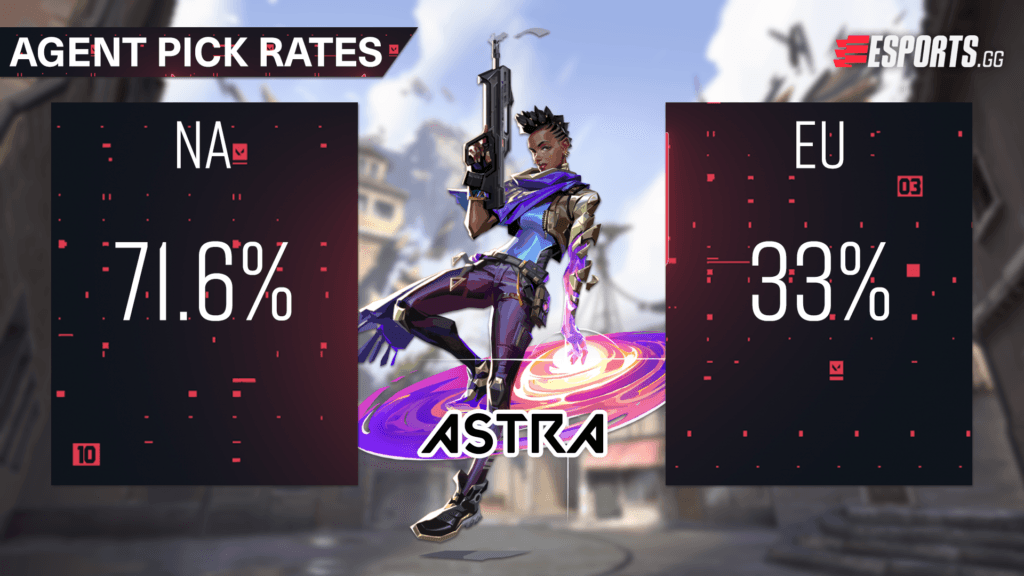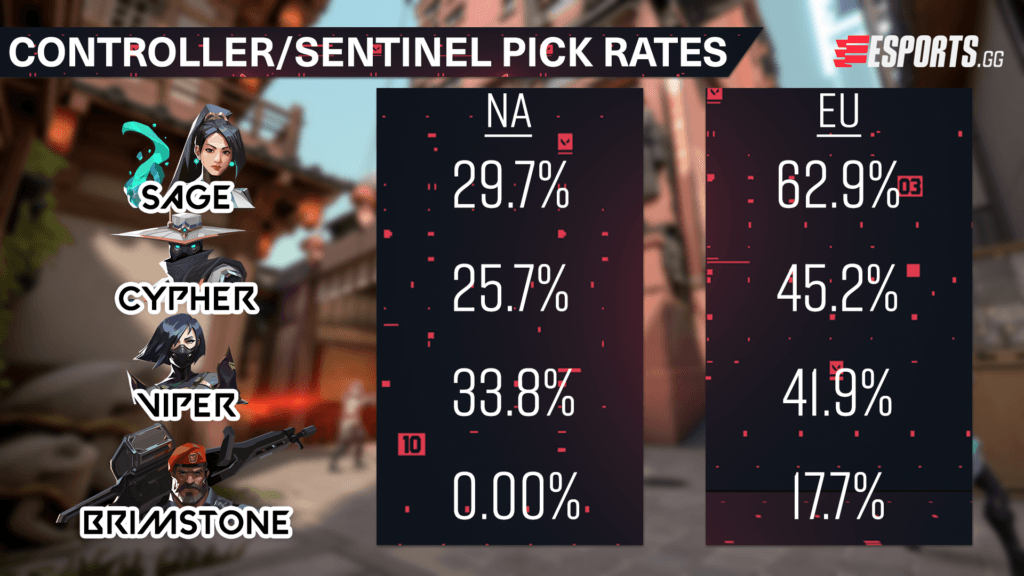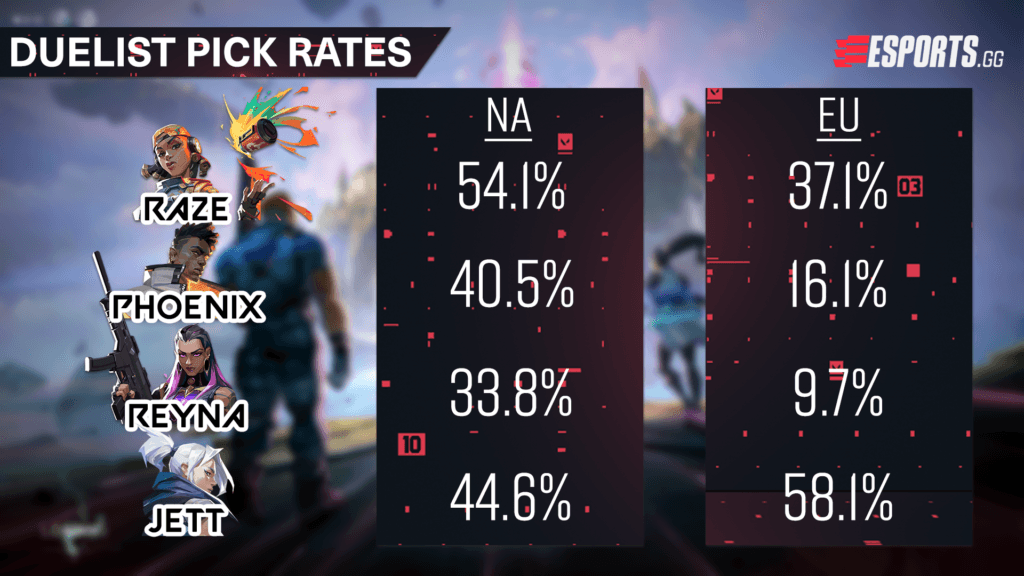The numbers are in from the Challengers 2 Finals and it is clear that Europe and North America have very different approaches when it comes to agent meta. Find out more inside.
In most esports, global competition defines the meta. Riot Games’ most international esport, League of Legends, sees compositional trends of strong regions usually trinkle down. In VALORANT, we are witnessing a phenomenon. Riot’s tactical FPS has cultivated competition in very insular environments, resulting in wildly different compositional priorities from region to region.
These different styles of VALORANT are bound to clash in the game’s first international event, Masters Reykjavik. The influence of global competition may create a more rigid VALORANT meta, but what this will look like is unknown. Until we see the aftermath, these are tendencies for North America and Europe based on their Challengers Final data we gathered from TheSpike.GG.
Astra has led to Omen falling in popularity
Since the dawn of VALORANT esports, Omen has maintained a near constant presence in the VALORANT meta globally. Omen’s standard yet versatile kit made him a clear choice, providing a mix of smokes, flashes, and information gathering utility. Omen became even more prevalent as the amount of former CS:GO players entering the scene surged. The familiar utility made Omen an easy ‘transitional’ Agent which the likes of Nick “nitr0” Cannella and Rick “Floppy” Kemery used effectively in the beginning stages of their VALORANT careers.
A testament to Omen’s prevalence was his pick rate, in First Strike North America Omen held a 100% pick percentage. The release of Astra challenged the wraith’s dominance over the scene as the top Controller. During Challengers 1, the first tournament featuring Astra, Omen’s popularity dipped. In NA he was reduced to a 59.2% pick rate. In the Challengers Final he was nearly invisible with only a 24% pick rate in NA and 30.6% in EMEA.
Astra a hot pick in NA but not in Europe
While Omen’s decline is a global trend, his replacement is not. North America has wholeheartedly embraced Astra as Omen’s second coming. In Challengers 2 Astra heralded an impressive 71.6% pick rate while in Europe she yielded only a 33% pick percentage in their respective Challengers Final event.

Europe favours Controllers and Sentinels
European teams such as the top seeded Team Liquid tend to prefer other adjacent Controllers and Sentinels, and typically have a greater amount of them in a single composition. The pick rates of Sage (62.9%) in EMEA eclipse that of NA while Viper (41.9%) and Cypher (45.2%) also hold healthy leads.

These differences are indicative of vastly different playstyles. EMEA teams embrace the utility of different controllers or sentinels to create complex plays, layering forms of crowd control. NA teams tend to prefer Astra because she provides a singular solution. In the right hands, Astra is capable of locking down a map by herself.
VALORANT Meta: NA is obsessed with duelists
The use of Astra as an all encompassing tool leaves more room for NA’s signature Agent priority, duelists. Near the start of VALORANT esports, NA teams such as TSM and FaZe Clan made waves with the use of their triple duelists compositions that saw incredibly boom-or-bust games. Though since this point the sheer amount of duelists has decreased, the echoes of this playstyle still resonate.

Once again comparing Challengers Final events, duelists make up 4 of NA’s top 10 Agents (Reyna/Phoenix/Jett/Raze) while in Europe only Jett and Raze crack the top. While European teams thrive off coordinated utility, the likes of TenZ, Vanity, and others define their teams by highlight reel worthy individual plays.
Reyna, which has an incredibly pick disparity (33.8% NA/9.7% EU), is a prime example of this. In the hands of TenZ Reyna’s ability to find quick picks, disengage, and reposition has won Sentinels countless rounds. Reyna generally is viewed as a selfish Agent pick however, since her abilities require kills in order to recharge them. Consequently Reina is far less appealing to EMEA teams.
Final thoughts on VALORANT meta
There are countless small differences between regions and teams that all point to poignant differences in playstyle. So far, there has been no reason to believe that there exists an objective 'superior' playstyle since all have led teams to success in their isolated region. Undoubtedly, we are witness history not just in VALORANT's first LAN but also because we will watch the esport's first global meta emerge.